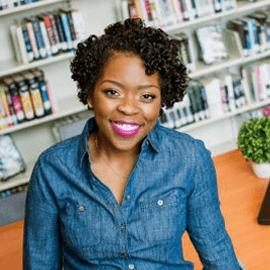
Creating Safe Spaces for Victims of Microaggressions
In the current environment, the press provides daily accounts of racial aggression and violence toward minority groups. While some minority groups experience racial discrimination more than others, according to a new article published in the NCA journal, Communication Monographs, it is Black women who are most negatively affected by this type of behavior. University of Connecticut Assistant Professor of Communication Shardé M. Davis, Ph.D., explores supportive communication among Black women and calls on other scholars to “identify strategies that help Black women manage the ubiquity of microaggressions.”
"Microaggressions are brief and common forms of verbal or behavioral discrimination that can be intentional or unintentional, and sometimes can be difficult to pinpoint."
In Davis’s study, Black women of various ages reported on the racial microaggressions committed by white women acquaintances, and how they coped with this behavior through their “sistah circles,” or support groups of women of the same race. Black women respond well to the support they receive from these circles of friends, because the group members view and experience the world from a similar vantage point and attach similar meanings to certain behaviors. Such groups also allow victims to express frustrations and other emotions that result from microaggressions.
Because many of the study participants admitted to Davis that they had never heard of the term racial microaggressions, let’s start with explaining the term before delving into the research.
What are racial microaggressions?
Microaggressions are brief and common forms of verbal or behavioral discrimination that can be intentional or unintentional, and sometimes can be difficult to pinpoint. Racial microaggressions belittle people of color. Many times, the perpetrators of this discriminatory behavior do not even realize that their deep-seated biases prompt their actions.
One example of a racial microaggression is when a white woman clutches her purse tighter as a group of Latino teens passes her on the sidewalk. Whether she is doing it consciously or unconsciously, this behavior shows she believes that they are likely to steal her purse because they look “suspicious.” An example Davis shares in the article is how retail employees follow Black customers around a store because this racial group is perceived as more likely to shoplift.
Sistahs support sistahs
Davis examines the way support is communicated and experienced among naturally formed groups of Black women friends. The study was guided by two questions:
- How do groups of Black women friends (non)verbally communicate support to a woman who has experienced a racial microaggression by a white woman peer?
- How, if at all, do age differences emerge during supportive discussions among Black women friendship groups?
Working with Black women students, Davis used a sample that consisted of 52 groups of Black women, each with three Black women friends. The ages of the 156 Black women ranged from 18 to 89 years old, with almost 50 percent between the ages of 18 and 25. Each group was observed by in one of the group member’s homes, and each person in the group was given a role: one support seeker and two support providers. The support seeker in the group shared an instance of racial microaggression that they had experienced, and the group then discussed how to handle the situation.
In analyzing the data and interactions, it was clear that the groups all engaged in a process of supportive communication, and that supportive messages changed over the course of the discussion task, resulting in a two-phase process.
- Individual Orientation Phase - This involved the friends communicating both verbal and nonverbal messages solely to comfort the support seeker.
- Collective Orientation Phase - Once the needs of the support seeker were met, the discussion broadened to the entire group’s experiences, and the support roles became irrelevant.
In all groups studied, once the support providers met the needs of the support seeker, everyone in the group shared their experiences with racial microaggressions, demonstrating the prevalence of this behavior from White women peers. The roles of support seeker and support provider became blurred and moved to the collective orientation phase, where the women had larger conversations about racism in the United States and Black women’s empowerment.
Age was also a factor in the research. While all groups engaged in the two-phase process, both the supportive strategies used during the individual orientation phase and the style of discussion that occurred during the collective orientation phase varied by age.
Understanding the circle
The communal atmosphere evident in the groups of women made members feel as if they were “in this together.” Black women feel isolated and displaced after encountering racial microaggressions, but within a group of friends, they feel safe and connected to others who can emphasize with their experiences.
Humor and Black women’s messages
During the supportive discussions, humor added a more relaxed dimension to what otherwise would have been a tense situation. The women often laughed during the conversations, which helped ease the way they communicated about racist behavior and messages that they considered inappropriate, politically incorrect, and insensitive.
A safe place
Overall, the research showed that supportive communication among friends can create a safe space where Black women can find refuge, vent, and decompress about the racial microaggressions they face daily. It also demonstrates that communication among minority groups is nuanced and deserves additional attention.


